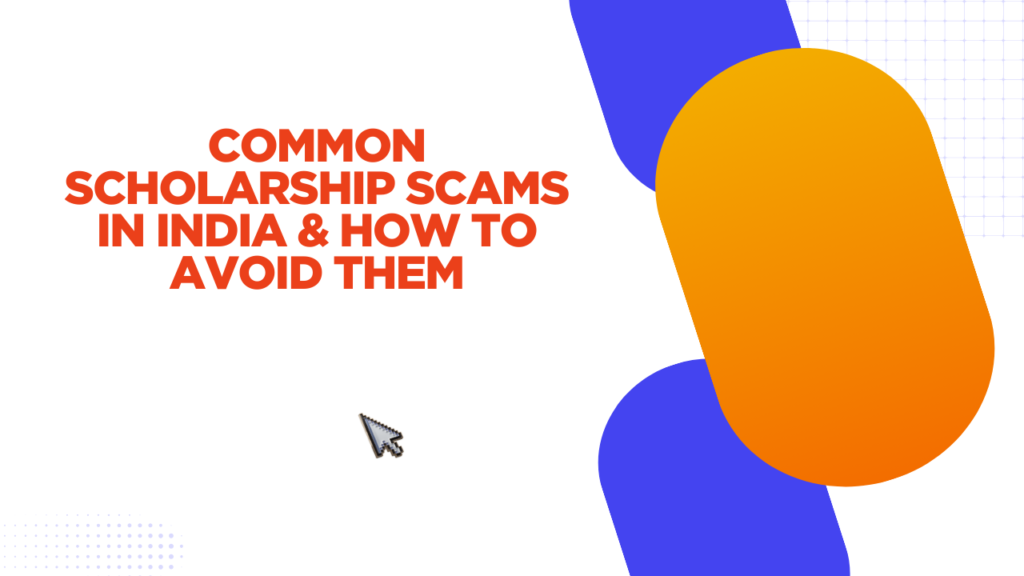
Many students in India rely on scholarships to fund their education. Unfortunately, scholarship scams are on the rise, targeting students and parents with false promises. These scams can result in financial loss, personal data theft, and false hopes. Understanding common scholarship scams and learning how to avoid them can help students stay safe while applying for legitimate financial aid.
Table of Contents
Common Scholarship Scams in India
1. Fake Scholarship Websites
Some websites claim to offer scholarships but are designed to collect personal information and money from students. They often have professional-looking designs and logos to appear legitimate. These sites ask for registration fees or personal details, which can be misused.
2. Upfront Payment Requirement
Legitimate scholarships never ask for an application or processing fee. Scammers often demand upfront payments, claiming it is necessary for application processing, verification, or registration. Once the payment is made, the scammer disappears, and the scholarship does not exist.
3. Guaranteed Scholarship Claims
Some fraudsters promise guaranteed scholarships in exchange for money. No legitimate scholarship guarantees financial aid. Scholarships are awarded based on merit, need, or other criteria, not on payment.
4. Phishing Emails and Calls
Scammers send emails or make calls pretending to be from well-known organizations, asking students to share personal details such as bank account numbers, Aadhaar numbers, or passwords. These details can be used for identity theft and fraud.
5. Fake Government Scholarship Schemes
Scammers misuse the names of government bodies like the Ministry of Education or the National Scholarship Portal (NSP) to promote fake scholarship schemes. They create lookalike websites and ask students to apply, stealing their information and money.
6. Social Media and WhatsApp Scams
Many scholarship scams spread through WhatsApp, Facebook, and other social media platforms. Fraudulent messages claim to offer scholarships and include fake links to trick students into providing personal details or making payments.
7. Overpayment Scams
Scammers send fake checks or deposit money into a student’s account, claiming it is an advance scholarship payment. Later, they ask the student to refund a portion of the money due to an “overpayment.” The original deposit is fake, and the student loses money.
How to Avoid Scholarship Scams
1. Verify Scholarship Sources
Before applying, check the official website of the scholarship provider. Government scholarships are usually listed on the National Scholarship Portal (NSP) or official state government websites.
2. Never Pay for a Scholarship
Legitimate scholarships do not require any payment. If a scholarship asks for application fees, processing fees, or deposits, it is likely a scam.
3. Research the Organization
Search for reviews and complaints about the scholarship provider. Check if they have a history of awarding scholarships and if their website is secure and professional.
4. Be Cautious of Unsolicited Offers
If you receive an unexpected email, message, or call about a scholarship you never applied for, it is likely a scam. Do not share personal details or make payments.
5. Look for Official Contact Information
Genuine scholarship providers have proper contact details, including phone numbers, emails, and office addresses. If the contact information is missing or vague, be cautious.
6. Cross-Check Government Scholarships
For government-funded scholarships, visit official websites like:
- National Scholarship Portal (https://scholarships.gov.in)
- State Government Education Portals
- UGC and AICTE Websites
7. Do Not Click on Suspicious Links
Avoid clicking on unknown links sent via email, SMS, or social media. These links can lead to phishing sites that steal your data.
8. Report Scholarship Scams
If you come across a scam, report it to:
- Cyber Crime Helpline (https://cybercrime.gov.in)
- Local Police Authorities
- National Scholarship Portal Helpdesk


